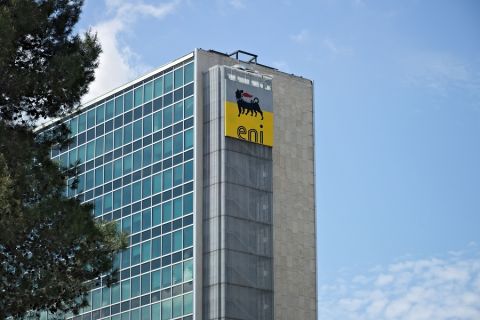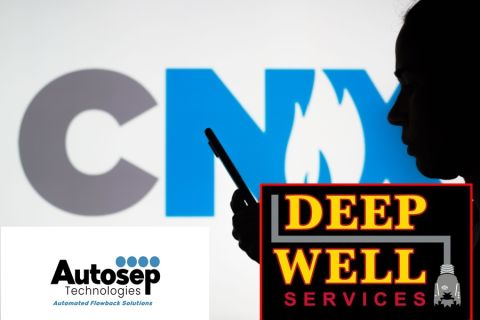First popularized in the 1970s as financial structures for energy investment and tax relief, drilling partnerships really hit their stride between 1979 and 1981.
But by the late 1980s the boom was over. The tax reform act of 1986, falling oil and gas prices, and the lack of gas-hedging opportunities all conspired to crash their popularity and collapse most of the ventures.
Today, drilling partnerships, although rare, still thrive. They allow individuals to invest directly in oil and gas drilling. They also allow investors to take a substantial first-year intangible drilling-cost (IDC) deduction off their federal income-tax bills, and then receive cash distributions from the sale of oil and gas until the wells run dry or are sold.
“Directly investing in oil and gas programs appears to be one of the least-known opportunities that my clients and friends are aware of,” says Norman Hurwitz, managing member of HKP Financial LLC, an investment and advisory firm based in Miami Lakes, Florida.
“When I bring up the topic, their first reaction is often negative, recalling tax-shelter problems or high-risk exploratory programs. Once over these misconceptions, they are surprised to learn the potential advantages of investing in developmental oil and gas programs.”
Drilling partnerships differ, for the most part, from today’s popular master limited partnerships (MLPs) in that they require a large initial investment, are geared toward high-net-worth individuals rather than retail and institutional investors, are mostly private as opposed to public, have very low liquidity and have longer-term exit strategies.
“The tax deductibility of the investment is very appealing to most high-net-worth or high-income-earning clients. Most programs are designed to give the investor a first-year tax deduction between 85% and 100% of the dollars they invest. But tax deductibility is not a reason to buy. Rather, it increases the return on the net investment,” says Hurwitz.
It is important to note that the deduction can be used to offset ordinary income, he says. The sponsoring E&P companies structure the programs so the investor is a general partner for approximately one year. This allows the company to allocate the IDCs to the investors. After the wells are drilled, the investor is switched to being a limited partner.
Appalachian partnership
One of the most established drilling-partnership sponsors, Lexington, Kentucky-based NGAS Resources Inc., uses drilling partnerships in some of its development initiatives even though it is a publicly traded company.
NGAS has sponsored more than 30 partnerships since 1996. The company specializes in developing large tracts of land in the southern portion of the Appalachian Basin. Due to the basin’s characteristics, NGAS found it was required to build gas-gathering infrastructures and make annual drilling commitments, meaning that many wells had to be drilled on its properties.
At the time, NGAS couldn’t fund the necessary infrastructure investments while also meeting these drilling commitments on its own, so the partnerships helped to fund some of the drilling.
“With a drilling partnership, the investor can subscribe for either limited- or general-partner interests,” says Bill Daugherty, president and chief executive.
Since the partnership allocates all IDCs to its investors, a high-worth individual, making $1 million a year, in a 40% combined state and federal tax bracket, can invest $100,000 in a drilling partnership and have a tax savings of about $40,000 from the IDC in the year of his investment, Daugherty says. “In effect, he is drilling with 60-cent dollars.”
The investor isn’t seeking a good tax shelter as much as an income stream, but the benefits associated with the tax treatment for working interests in oil and gas activities are obviously important, he adds.
“Our investors look at these partnerships primarily as good economic investments. There is a tax advantage, but that is just an added reason for getting into a partnership.”
Participation in NGAS’ partnerships has grown over the years. “We had fewer investors in our early partnerships, but the size of the investor pool has grown. Some of our early partnerships had only one or two people.”
Capitalization of each partnership averages about $10 million, ranging between $5- and $20 million. The average partner invests $70,000 to $80,000. NGAS requires its partners to be SEC-accredited investors meeting specific guidelines on income. “We have the right to say no to an investor who might not meet our financial criteria or investment experience requirements,” Daugherty says.
In the past, drilling partnerships have had a bad reputation. “Because it’s a business where, in the past, some unscrupulous people have been involved, investors need to be sure they have the right contacts and check out their investment. No one can tell you how good a series of wells might be, but if you are in with a reputable company, everybody wins.
“We have a majority of repeat investors, and they are often in multiple partnerships over the course of many years. We’re not going to put our investors in a bad deal, because, firstly, we participate as an investor in all our programs and, secondly, we can’t expect to sell future partnerships unless we have a stable of happy, satisfied partners that are looking to reinvest their money.”
Two factors affecting partnership returns are the price of natural gas, and the amount of gas produced. “It’s not so much operating costs, because we know what a well costs to operate.”
NGAS has another reason to satisfy investors: It doesn’t experience the true profit potential of the arrangement until investors profit. Typically, when 100% to 110% of the partners’ initial invested capital has been returned to them, NGAS gets an additional share in the partnership, known as a reversionary interest. In a typical partnership, NGAS may keep a 25% interest and sell 75% to partners. After payout, its interest will increase to 40%.
“That gives us an incentive to prudently get as much gas as we possibly can, as quickly as we can, without hurting the well, because our payback only comes after we achieve payout for the investors.”
Partners, for the most part, are savvy, independent business owners who have been very successful and need the tax benefits. “They are looking for an investment that would certainly beat the market or would beat what they can do with their cash. We have doctors and attorneys as investors who, because this is an alternative investment, have done the research to understand what it does for them and what the risks and rewards are, with tax advantages being only part of the story.”
In forming each program partnership, NGAS works with small brokerage firms that cater to high-net-worth clients. Many of the company’s drilling partners also trade NGAS stock on Nasdaq so they can take advantage of increased stock prices as the company’s reserves increase.
Daugherty points out, however, that drilling partnerships are long-term investments, with low liquidity, so they are only for investors who can bear that risk.
“The wells we drill last 25 to 30 years, and our partnership is based on the life of the wells. If a partner wants to sell his interest before the end of the partnership, his exit options may be very limited,” he says.
A Southern focus
Richardson, Texas-based Reef Oil & Gas Partners LP generates and participates in drilling ventures, and offers a buyback program to its investors.
“We have a 3%-buyback program for liquidity that is usually offered on an annual basis,” says Mike Mauceli, chief executive. “We establish a value of the investment in the fifth year after all the wells have been drilled and put into production. Then, a third-party engineering firm evaluates the reserves and we offer to buy back up to 3% of the units per year.”
Reef’s investors buy in as either a general or limited partner in its public programs. Investors can benefit from tax incentives against their active income, and can take deductions in the same year wells are drilled. Once the wells are drilled and are producing, monthly cash flow to investors from production is within 60 to 90 days.
Reef is mainly concentrating its drilling activities in the Spraberry and Delaware sand trends of West Texas and eastern New Mexico, as well as the onshore Gulf Coast Basin in South Texas. The company is producing about 850 barrels of oil and 6.7 million cubic feet of gas per day net to the company’s interest. Reef currently has an interest in more than 600 oil and gas wells in the U.S.
“Our West Texas properties produce predominately oil and, with today’s high prices, that can translate into real value for our investors. Also, we produce very rich, high-Btu gas that is selling for about $10.50 per thousand cubic feet.”
For example, Reef’s gas in South Louisiana is in excess of 1.1- to 1.2 million Btu per thousand cubic feet. “We sell the gas down the pipeline with the liquids in it, and get a high-Btu premium adjustment for it,” says Mauceli.
Reef is also drilling a number of Canyon Sand wells in West Texas. And, its South Texas wells include a few that target shallow Miocene and Oligocene-aged rock, using seismic amplitude anomalies. The 3,000- to 4,000-foot wells are very low risk, says Kellam Colquitt, Reef chief operating officer and head of exploration.
“Occasionally we’ll drill some wells in South Louisiana, but we are beginning to focus operations in areas where the presence of abundant infrastructure and shallow drilling results in minimal costs and time to hook up the wells,” Colquitt says.
“We are moving away from Louisiana because our investors prefer to avoid the complexities associated with drilling wells in that region,” Colquitt says, “due to the post-Katrina effect of shutting in production that takes too long to get back online.”
Reef generally holds a 16% working interest in its public partnerships, and also has interests in its private partnerships. Reef’s partnerships also participate in other companies’ prospects, and may invest 5% to 50% in a well, so both Reef and its partners own the well. Still, fewer than half of its wells are partnered with outside companies. “Most of our prospects are internally generated,” says Colquitt.
Reef has a new public partnership that it is registering with the SEC and in all 50 states. Mauceli says, “While many drilling partnerships are not public due to the cost of going through all the scrutiny of these regulatory agencies, we elected to go this route because it makes all the information available for the investors. It’s the same information as a public company would file. It keeps the investors informed about what the actual returns are and other information.”
The registration can have up to seven partnerships. “We actually purchase units right along with the partners. We take risk on the front end in these partnerships. A number of other partnerships may take an interest in the back end of the partnership, but ours are bought up front,” says Mauceli.
These public partnerships allow Reef to work with accredited and non-accredited investors. The structure also allows the investor to come in as a general or a limited partner. “Investors have a choice, depending on whether they want a tax deduction or they want to come as a limited partner,” he says.
Like NGAS, Reef’s partnerships last as long as the wells produce or until the decision is collectively made to sell the wells and make cash distributions.
Unlike NGAS, Reef has an exit strategy in all of its partnerships of five to seven years, depending on commodity prices at the time, although there is no requirement to do so.
“We have no debt, so unlike start-ups that are financed with mezzanine financing and are looking for a very short exit strategy, we are not required to sell. Sometimes mezzanine-debt-funded companies are required to sell in three years, whether they want to or not,” says Mauceli.
Reef’s partnerships are funded about 80% by repeat investors and about 20% by new investors. “I started the company in 1987 so we’re entering our 21st year. We have been here for the long haul and will be around for a long time yet,” says Mauceli.
Recommended Reading
Ithaca Deal ‘Ticks All the Boxes,’ Eni’s CFO Says
2024-04-26 - Eni’s deal to acquire Ithaca Energy marks a “strategic move to significantly strengthen its presence” on the U.K. Continental Shelf and “ticks all of the boxes” for the Italian energy company.
Deep Well Services, CNX Launch JV AutoSep Technologies
2024-04-25 - AutoSep Technologies, a joint venture between Deep Well Services and CNX Resources, will provide automated conventional flowback operations to the oil and gas industry.
EQT Sees Clear Path to $5B in Potential Divestments
2024-04-24 - EQT Corp. executives said that an April deal with Equinor has been a catalyst for talks with potential buyers as the company looks to shed debt for its Equitrans Midstream acquisition.
Matador Hoards Dry Powder for Potential M&A, Adds Delaware Acreage
2024-04-24 - Delaware-focused E&P Matador Resources is growing oil production, expanding midstream capacity, keeping debt low and hunting for M&A opportunities.
Making Bank: Top 10 Oil and Gas Dealmakers in North America
2024-02-29 - MergerLinks ranks the key dealmakers behind the U.S. biggest M&A transactions of 2023.





